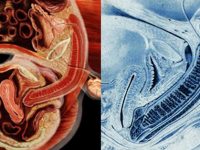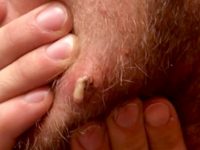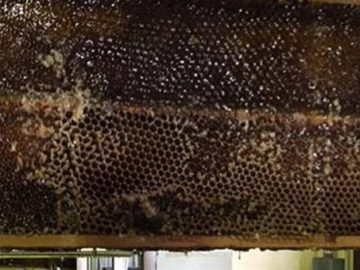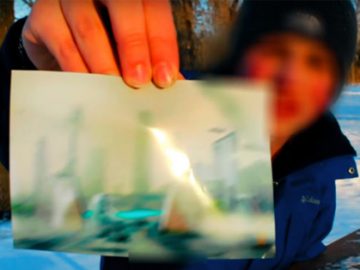23 year old facility assistant, Fred Ward, from Ontario, Canada suffers from staphylococcal infections (more commonly known as ‘staph’ infections) on a regular basis. The thing is that he actually can’t get rid of them. This time, instead of waiting to be treated by a doctor, he decided to get rid of the cyst that had been growing on his face for four days – himself.
He decided that this throbbing cyst that appeared just above his jaw line needs to go away immediately and took the matters into his own hands. The gross footage that has emerged out of this was taken by one of Fred’s friends. The video shows Fred taking out the painful cyst in his bathroom at home. Ward is shown poking and squeezing the cyst, eventually resorting to using tweezers in an attempt to pull the entire sucker out.
After couple of minutes of trying, Fred was still unable to empty the cyst completely. Pictures show pus is hanging off his jaw. Thank God, Fred has completely recovered the infection. Fred has seen a doctor from the very beginning in order to take care of the cyst but the initial draining was unsuccessful because of a ‘visible build-up’ outside of the growth.

“I’m still not sure what caused the infection and it’s still being investigated,” Fred said. “I decided to drain it myself once it appeared ready.”
“I have had 10 or so of these exact infections and didn’t want to have to go and wait at the hospital again as I was already being prescribed proper antibiotics by my doctor.”
Because of his health situation Fred is regularly seeing doctors as these continue to pop up on his body.
“It was extremely painful to the touch and would throb as the days went on,” Fred added.
“[Thankfully] it has fully cleared up and left little to no scarring.”
In case you haven’t heard of ‘staph’ infections before, they are caused by the bacterium staphylococcus (also called “staph”) that is a group of bacteria that can cause a multitude of diseases. Staph infections may cause disease due to direct infection or due to the production of toxins by the bacteria. Boils, impetigo, food poisoning, cellulites, and toxic shock syndrome are all examples of diseases that can be caused by Staphylococcus.
Symptoms and signs of a localized staph infection include a collection of pus, such as a boil, furuncle, or abscess. The area is typically tender or painful and may be reddened and swollen.

Methicillin-resistant Staphylococcus aureus, known as MRSA, is a type of Staphylococcus aureus that is resistant to the antibiotic methicillin and other drugs in this class. Staph infections are treated with topical, oral, or intravenous antibiotics, depending upon the type of infection.
Staphylococcal disease of the skin usually results in a localized collection of pus, known as an abscess, boil, or furuncle, depending upon the exact type of lesion that is present. Staph infection symptoms may include an area of skin that appears red, swollen and tender or painful. Drainage or pus is common. When staph is in the blood (bacteremia or sepsis), it can cause high fevers, chills, and low blood pressure.
According to NHS Choices, ‘staph’ infections can range from minor skin infections like Fred’s to serious ones affecting the blood, lungs and heart, so you could say that Fred actually got off lightly.




































Connect with us